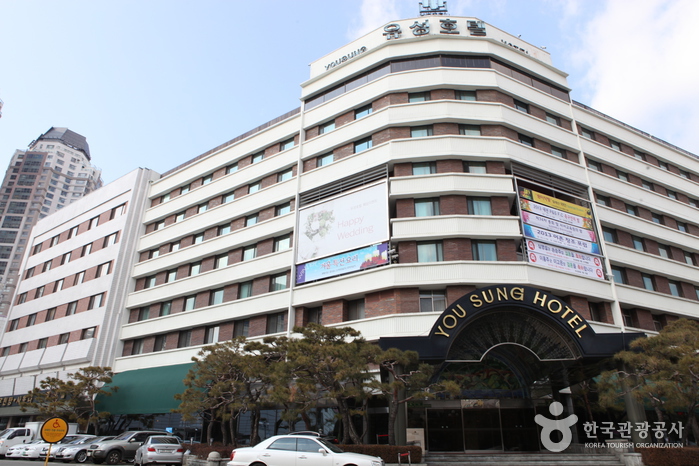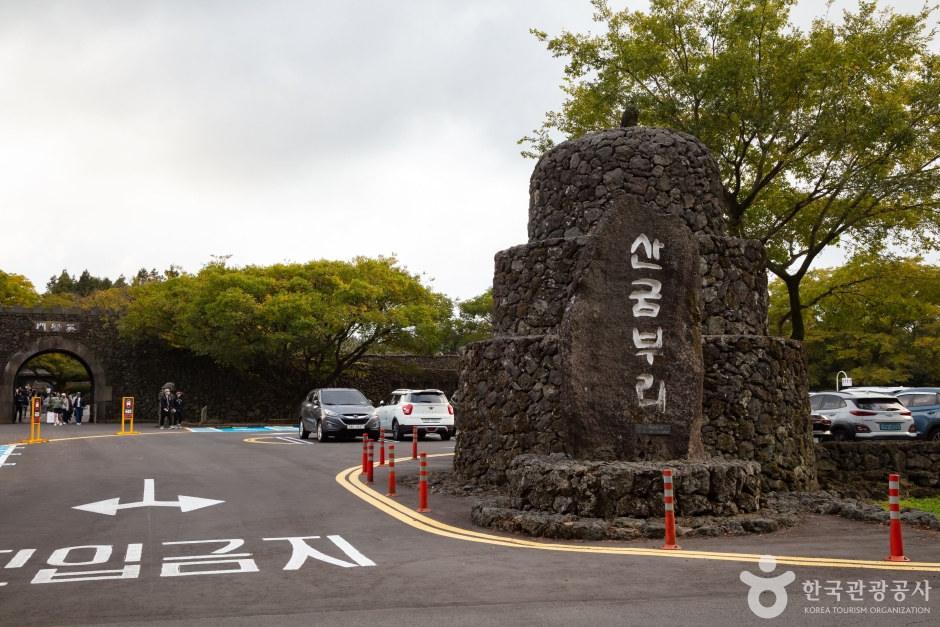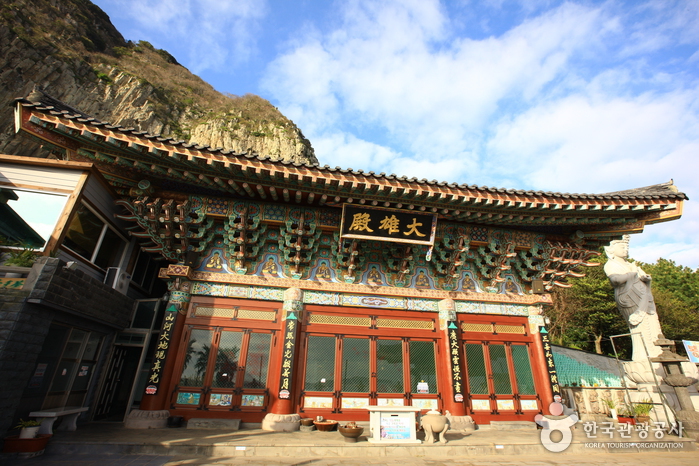Yuseongoncheon Hot Springs (유성온천지구)
2024-03-04
Oncheon-ro, Yuseong-gu, Daejeon
+82-42-611-2076
Yuseongoncheon Hot Springs is located in Yuseong-gu, Daejeon. It is a venerable hot spring area known since the 7th century. The hot spring water temperature ranges from 27 to 56 degrees Celsius, and it contains various beneficial minerals with an alkaline pH ranging from 7.5 to 8.5, flowing from a depth of 200 meters underground. The streets are lined with retusa fringe trees, and in May, the Retusa Fringe Flower Festival takes place.
Geojedo Island (거제도)
2024-12-04
Geoje-si, Gyeongsangnam-do
+82-55-639-3399
Geojedo Island is the second-largest island in South Korea, connected to Tongyeong-si by the Geojedaegyo Bridge and to Busan-si by the Geogadaegyo Bridge. It boasts numerous tourist attractions such as Haegeumgang Islets, Oedo Botania, Maemiseong Fortress, and Geoje P.O.W. Camp Historic Park. Famous for its local cuisine like sea pineapple bibimbap and sea urchin and seaweed soup, Geojedo Island is also known for its pebble beaches including Hakdong, Yeocha, Mangchi, and Nongso Pebblehaebyeon Beach.
Bijarim Forest (비자림)
2025-04-01
55 Bijasup-gil, Jeju-si, Jeju-do
+82-64-710-7912
Designated and protected as a Natural Monument, Bijarim Forest is home to 2,800 bija trees, ranging from 500 to 800 years in age, spread over 448,165㎡ land area. These majestic trees range from 7-14 meters in x_height, 50-110 centimeters in diameter, and 10-15 meters in crown x_width, so this forest is quite a rare example of its kind in the world. The berries of bija trees were used widely as a medicine used to kill parasites, while the wood was used to make premium furniture and go boards. Forest bathing in a bija forest helps to combat arteriosclerosis, mitigate physical and psychological fatigue, and restore the body’s rhythm.
Unhyeongung Royal Residence (서울 운현궁)
2024-03-04
464, Samil-daero, Jongno-gu, Seoul
+82-2-766-9090
Located near the Gyeongbokgung Palace, Unhyeongung Palace was a residence of royalty in Joseon period. It was the place where Gojong (1582-1919, reign 1864-1907), king of Joseon (1392-1897) and emperor of the Korean Empire (1897-1910), was born in, as well as the place where Heungseon Daewongun (1821-1898), his father, had resided in. Buildings include Noandang Hall, Norakdang Hall, and Irodang Hall. The Royal Residence offers programs like traditional weddings and traditional culture experiences, while the exhibition hall showcases Joseon-era artifacts.
Sangumburi Crater (산굼부리)
2024-11-28
768 Bijarim-ro, Jeju-si, Jeju-do
+82-64-783-9900
Sangumburi Crater has been designated as a Natural Monument. It is located on the southeast side of Jeju, and is a flat crater, about 650 meters wide, 100 meters deep, and 2,070 meters in circumference. If you look at the crater from above up, it looks like a man-made circular stadium. There is a variety of plant-life in the crater. On the north side, Nandaeseong vegetation such as red-thorn trees, and magnolia trees grow, along with the rare winter strawberries. On the south side of the crater, Ondaerim vegetation such as evergreens, maples, and mountain strawberry trees cover the area. Because so many different kinds of trees and plants grow in such a limited space, it attracts the attention of researchers as well.
Sanbanggulsa Grotto - Jeju (산방굴사(제주))
2022-11-14
218-12 , Sanbang-ro, Seogwipo-si, Jeju-do
+82-64-794-2940
It is said that the peak of Hallasan Mountain where Baekrokho Lake now exists was taken off and thrown away, which then became Sanbangsan Mountain. The myth describes how unlike other mountains on Jejudo Island, this mountain does not have a crater. The 5m-high rock cave at the cliff on the southwest side of the mountain was originally called Sanbanggul Cave, but it is called a temple now because it possesses a Buddhist statue.
This is where monk Hye-Il (964~1053) had lived during the Goryeo dynasty (918~1392)
Inside the cave, you can see Marado Island and the Dragon Head Coast. You can also see small ponds being made by the water drops that fall from the ceiling all through the year. The plant zone on a cliff of Sanbangsan Mountain is also designated as a natural monument. It is the only place on Jejudo Island where island boxwoods grow. On the Dragon Head Coast is the Hamel Memorial Monument.
Baekundonggyegok Valley (백운동계곡)
2019-12-05
Baekdam-ro, Buk-myeon, Inje-gun, Gangwon-do
+82-33-462-2554
Baekundonggyegok Valley flows 5 km from the valley of Deoktaesan Mountain and Seongaksan Mountain. There are oak trees and maple trees growing in thick clusters and clean waters flowing nearby.
Baekundonggyegok Valley stands between the seven brother stones and Yongdampokpo Falls, and starting from this point to Gwuiddegicheong Peak is Baekundonggyegok Valley. The rocks are connected in a long line and ponds can be seen here and there. On each side of the valley there are rock walls, which make for some unforgettable scenery. Baekundonggyegok Valley maintains its natural beauty and majesty, which attracts many hikers. Especially from the middle point where Jikbaekun and Gokbaekun combine to make the Gugokgyegok Valley the most magnificent scenery of Baekundonggyegok Valley can be seen. The largest waterfall of Baekundonggyegok Valley, called Baekunpokpo Falls, is about 30 meters high. The upper part of the waterfall has rocks lined up in a long line. The landscape of Seoraksan Mountain seen from this point is the representative landscape of the mountain.
Busan Beomeosa Temple (범어사(부산))
2025-03-13
250 Beomeosa-ro, Geumjeong-gu, Busan
+82-51-508-3122
Beomeosa Temple, built in the Silla dynasty in 678, stands as a historic site known for producing outstanding monks. Situated amidst the splendid landscape of Geumjeongsan Mountain, it boasts a long tradition and rich history, housing numerous cultural relics. Visitors can experience the daily life of monk through templestay.
Biryongpokpo Falls (비룡폭포)
2021-04-09
Seoraksan National Park, Seorak-dong, Sokcho-si, Gangwon-do
+82-33-801-0900
Biryongpokpo Falls is 2.4 km away in the south from the Seoraksan Small Park ticket booth. Biryongpokpo Falls is located between Towangseong Falls in the upper region and Yukdam Falls in the lower region. Biryongpokpo Falls was named after the shape of the water stream of the falls (pokpo) resembling a dragon (ryong) ascending (bi) to heaven. Their powerful water streams pouring into the narrow and rough valley look like a legendary dragon. There is another tale associated with Biryongpokpo Falls. A dragon lived here, and one day villagers offered a maiden to the dragon to break the drought. Then, the dragon flew up to the sky, and there were no more droughts in the village. The waterfalls drop 16 m to the ground and their loud sound resonates in the valley. In winter, the waterfalls freeze and the frozen water columns offer another magnificent view. A clear pond is formed beneath the falls and around which there is a wooden observation deck. Biryongpokpo Falls and Surroundings in Seoraksan Mountain were designated as the Scenic Site No. 95. It takes about 1 hr from the Small Park to the Biryongpokpo Falls, while it takes about 3 hr (round-trip) to visit up to Towangseong Falls and Yukdam Falls. The difficulty level of this tour course is ordinary.
Gayasan National Park (Hongnyu-dong, Cheongnyang-dong Area) (가야산국립공원(홍류동,청량동지구))
2021-06-08
1200, Gayasan-ro, Hapcheon-gun, Gyeongsangnam-do
+82-55-930-8000
Gayasan Mountain stretches along the border of Gyeongsangnam-do and Gyeongsangbuk-do in an area of approximately 76 square kilometers. The mountain's peak, Sangwangbong Peak, reaches 1,430 meters above sea level. Gayasan Mountain was designated as Scenic Site No. 5 in 1966 and National Park No. 9 in 1972 due to its breathtaking scenery. Gayasan Mountain is known to offer one of the best scenic views in the country and also as the home of Haeinsa Temple.







 English
English
 한국어
한국어 日本語
日本語 中文(简体)
中文(简体) Deutsch
Deutsch Français
Français Español
Español Русский
Русский